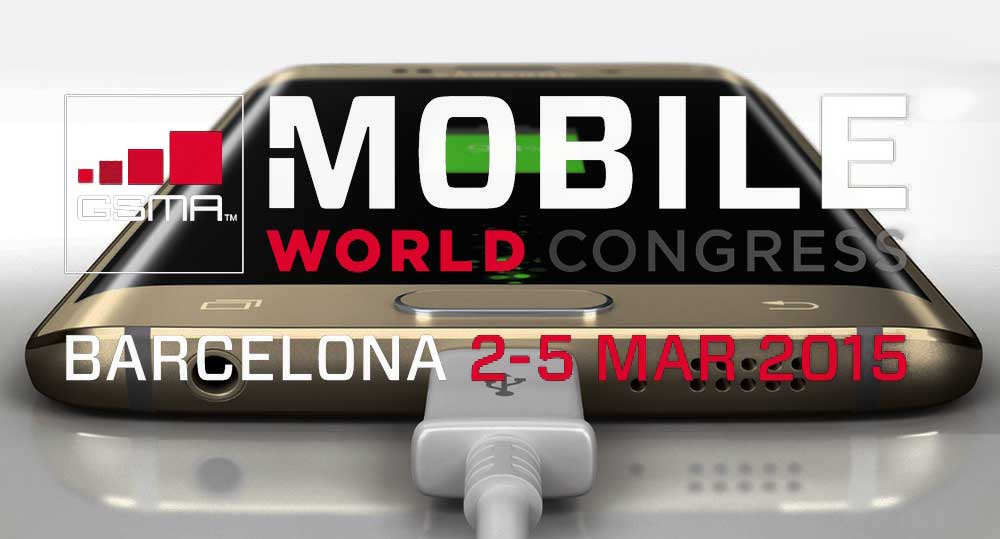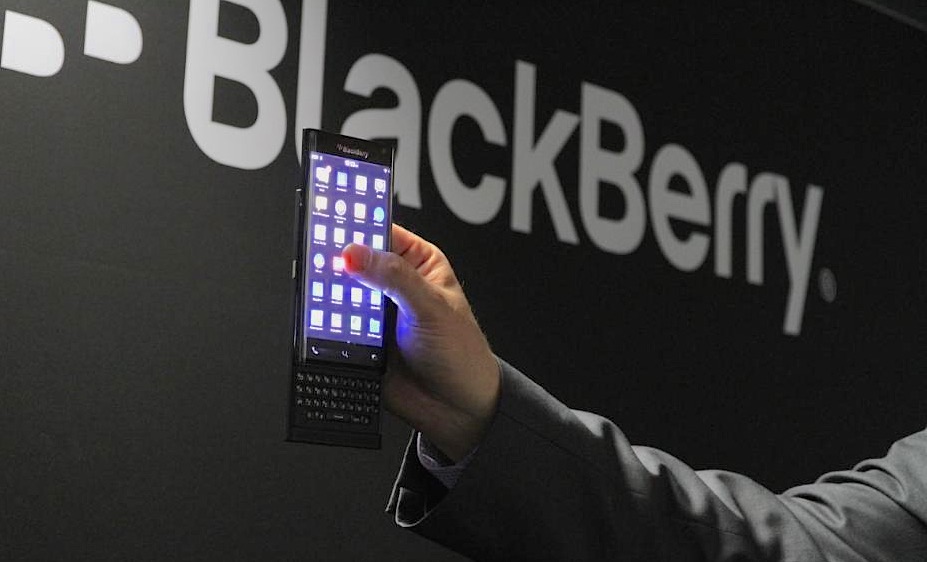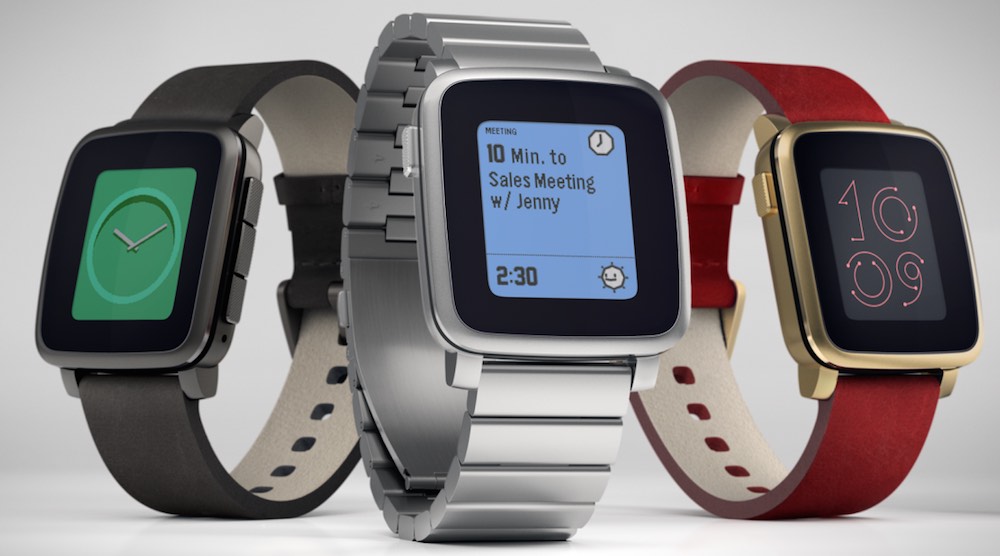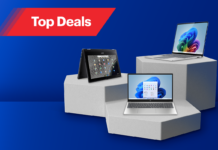
March 5th marked the final day of Mobile World Congress in Barcelona, Spain. While most of the splashy announcements (like that Samsung Galaxy S6 Edge) took place early in the week, through the rest of the show some definite trends became clear. And given that MWC 2015 is the world’s biggest exhibition of mobile technology, trends there are likely to set the pattern for what we see here in terms of smartphones, tablets, smartwatches and other mobile gear throughout this year.
Everyone is Gunning For the iPhone …
If there was one element that overshadowed all others through MWC 2015, it was Apple’s iPhone. It was only a few days ago that news hit showing Apple had overtaken Samsung in global smartphone sales over the holiday quarter. Before that, the iPhone took top spot in China and before that, it set launch weekend records.
Samsung came out swinging with the Galaxy S6, a flagship that barely resembles the Galaxy S5 that preceded it. Rising to the iPhone premium design challenge, plastic and polycarbonate has given way to glass and metal. Not stopping at just a premium look, the Galaxy S6 features a de-cluttered user interface and it’s equipped to challenge the iPhone in one of its traditional strong points: photography.
The Galaxy S6 Edge (still my personal pick for the coolest piece of production-ready gear to be unveiled at MWC 2015) ramps things up to the next level with a display that wraps over both edges. Even if those display edges did nothing, they make sure the Galaxy S6 Edge looks like no other smartphone out there. But they do offer functionality as well as looks.
HTC wasn’t sitting still either, and in the new One M9 it sets out to make one of the best Android smartphones of 2014 one of the best smartphones available—period.
The HTC One M9 looks virtually identical to last year’s One M8, but its dimensions have shrunk slightly making it even easier to hold. The UltraPixel primary camera that was its most controversial feature has been replaced by a conventional 20MP sensor. That low-light UltraPixel technology remains in the front-facing “selfie” cam, though.
…or Looking to Fill a Niche it Misses
Most of the other smartphone makers at MWC 2015 weren’t even trying to take on the iPhone 6 directly. Instead, they are preparing to duke it out over the midrange market or specialty niches where the iPhone doesn’t compete.
As a result, anyone in the market for an affordable smartphone this year is going to be pleasantly surprised. Manufacturers including Microsoft, Sony and LG were showing off mid-range models that look more like flagship-quality devices than the budget smartphones of previous years.

Smartphones that try to fill a niche overlooked by the iPhone were also proliferating. A prime example is the BlackBerry Leap, a mid-range 5-inch touchscreen smartphone aimed at young professionals. BlackBerry also briefly flashed glimpses of “The Slider,” a curved display phone (pictured above) with a slide-out QWERTY keyboard. Lenovo’s Vibe Shot is a super slim smartphone with a 16MP camera that’s designed to physically resemble a pocketable point-and-shoot digital camera. The Black Phone 2 is positioning itself as the smartphone of choice for those who demand security above all else and think of encrypted everything as a key selling feature.
Massive Display Sizes Jumps Giving Way to Resolution Gains
Last year we saw many of the previous generation smartphones jumping to bigger displays. The 5-inch Galaxy S4 became the 5.1-inch Galaxy S5, the 4.7-inch HTC One M7 became the 5-inch One M8, the Moto X grew from a 4.7-inch display to a 5.2-inch and of course the iPhone 5s had a 4-inch display while the iPhone 6 grew to 4.7-inches.
Growth in display size seems to have slowed in 2015. Mostly that’s because everyone has phablets now and if their smartphones get any larger, they’ll be in direct competition with their own phablet.
However, there was a trend of increasing smartphone display resolution at MWC 2015. Those smartphone screens are getting a lot sharper.
For example, while the Samsung Galaxy S5 had a 1920 x 1080 display with 432 ppi density, the Galaxy S6 moved to a 1440 x 2560 (Quad HD) panel with a 577 ppi density. Sony’s Xperia M4 Aqua (the latest in that line of mid-range smartphones) got a boost from 540 x 960 pixels (230 ppi) to 720 x 1280 pixels (294 ppi)—not a bad jump for such an affordable phone.
Smartwatches Are Hot
Some people think that with the Apple Watch event coming in just days and Apple’s smartwatch due to hit shelves shortly thereafter, the market for wearables will crumple. That theory has everyone buying an Apple Watch, while all the other smartwatches and fitness bands gather dust.
Other people—myself included—think that the Apple Watch is going to generate even more interest in wearables and mark the kickoff point where the smartwatch truly goes mainstream. Demand won’t collapse for the other smartwatch alternatives, it will actually grow.
At MWC 2015, the latter viewpoint was clearly the most popular. There were some amazing smartwatch reveals including LG’s elegant Watch Urbane and the Watch Urbane LTE with built-in cellular connectivity. Chinese newcomer Huawei unveiled its first Android Wear smartwatch, a dead ringer for a classic analog wristwatch.

Of course Pebble was there too and news of its record-setting Pebble Time Color and Time Color Steel Kickstarter launches helped keep it in the spotlight.
Microsoft Is Now the Cool Kid Who Plays Nice
One of the things that really struck me about Mobile World Congress was Microsoft’s role. Let’s face it, the company has been a bit heavy handed in the past. Subtlety wasn’t a strong point and it was sometimes overbearing in its efforts to get people to use its products and to fend off competitors.
The new Microsoft does things much differently. It’s trying to build Windows mobile market share but rather than bashing all the flagship smartphone leaders and trying to convince people to ditch their iPhones, the company was at MWC with modestly priced, mid-range Lumia phones. That’s a slow and steady approach that should pay off in increased momentum for Windows mobile.
It’s already been busy producing high quality mobile versions of its Office apps and releasing them for free on competing platforms. At MWC, the Samsung Galaxy S6 reveal included unlikely news: what is almost certain to be the top-selling Android flagship of 2015 will come with a Microsoft Apps folder prominently pre-installed and free Microsoft OneDrive cloud storage.
Microsoft apps pre-installed on an Android smartphone!
One of the most popular products at the show was a portable, Bluetooth keyboard. But not just any wireless keyboard, the Microsoft Universal Folding Keyboard folds up to an extremely compact size, offers a high quality typing experience similar to its innovative Surface Type covers, it’s compatible with not just Windows but also iOS and Android, and users can switch between two different mobile devices at the press of a button.
Yes, at a show full of the latest smartphone hardware, Microsoft got people excited about a keyboard. That’s an accomplishment.

There were plenty of other trends in evidence (including mobile payment and virtual reality), but those I listed are the ones that strike me as setting much of the tone for mobile consumer electronics this year. Expect the Galaxy S6 to be a hit, the Galaxy S6 Edge to become a “must have” premium device and possible trendsetter. Expect affordable smartphones to be better than ever, with fewer compromises. Expect the smartwatch industry to kick into overdrive in 2015 (keep an eye out for our Apple Watch coverage on March 9 as a starting point) and keep watching Microsoft—I think it’s going to continue doing interesting and unexpectedly cool things in 2015.




Black Phone 2? I’m in love!
Comments are closed.